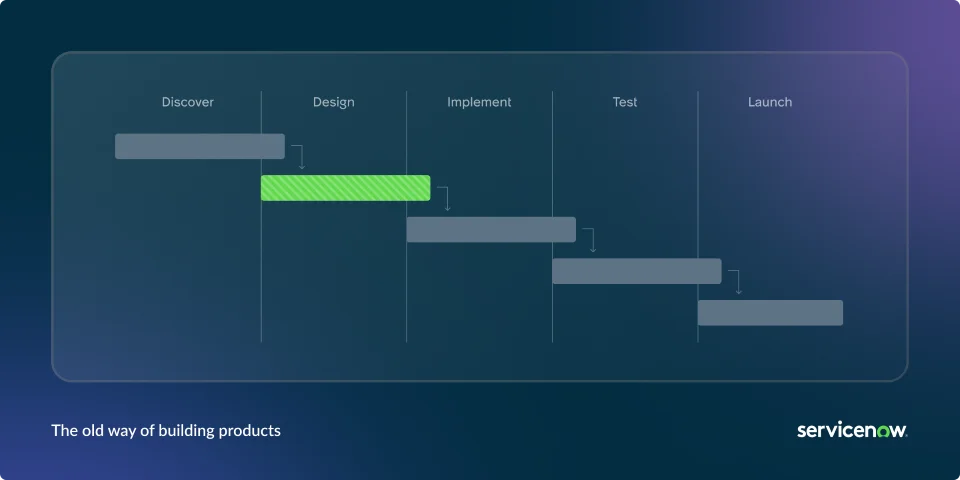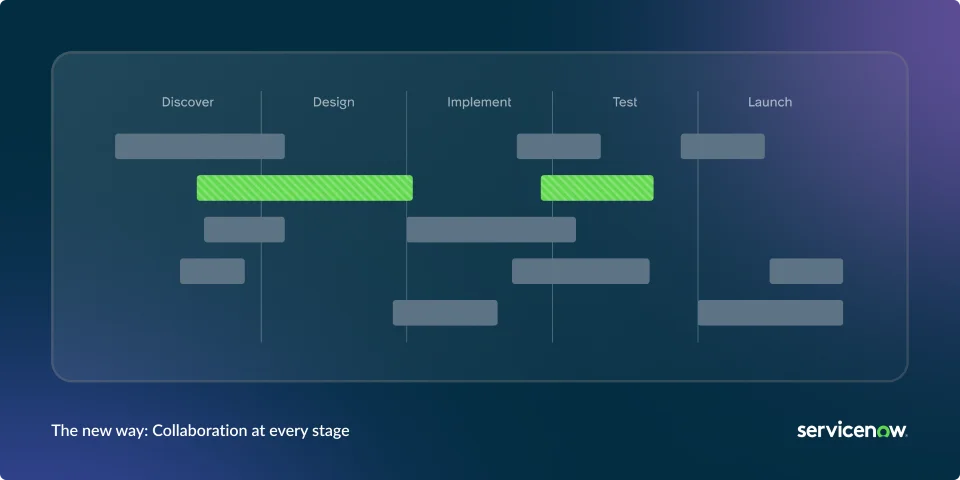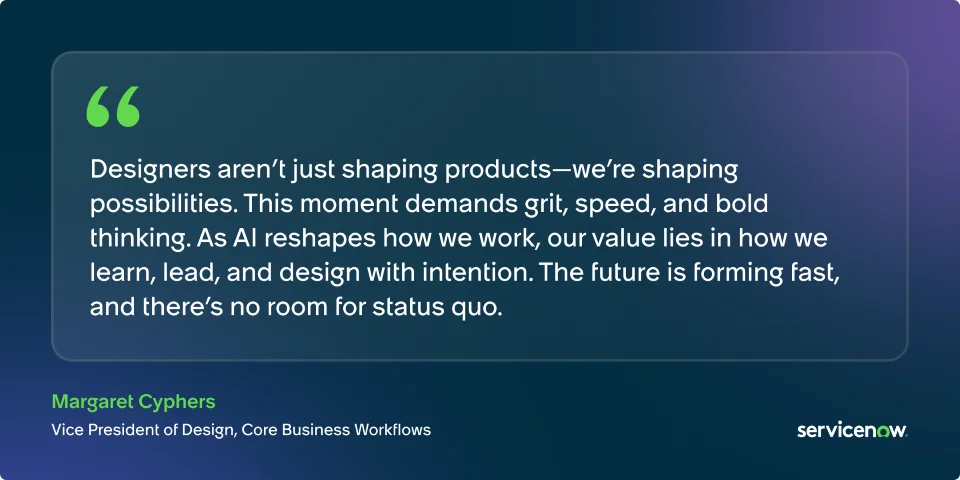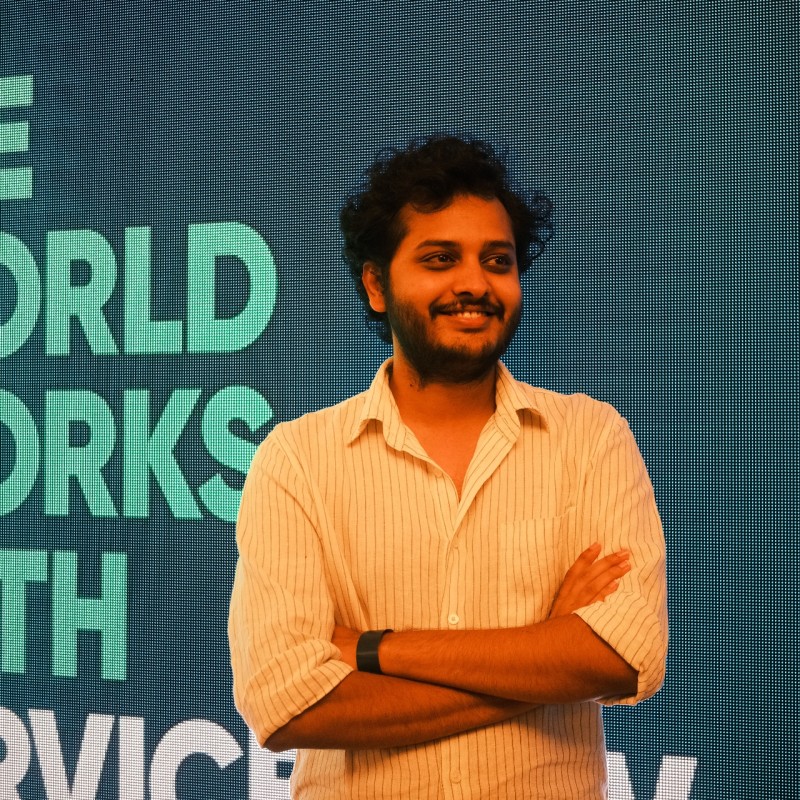Over the past few years, the way product teams work has been evolving. Roles are becoming less rigid and more expansive with an increase in shared responsibilities. Product teams are taking on more tasks, executing at a faster pace, and learning entirely new skills.
AI is making it easier for product builders1 to take on activities outside their primary roles. You may have seen product managers brainstorming designs to visualize their requirements, designers creating clickable prototypes to validate feasibility, and engineers contributing to the product strategy. AI is fundamentally changing the dynamics within product teams.
To understand how the designers' role is evolving, let's zoom out and examine at how the overall workflow has been changing.
The old way of building products
Before AI, the roles were defined and product builders worked in their own swim lanes. While this may not have been true for every team, it represents a generalised view of the process in the industry. Product managers shared requirements with the designers. When the designs were complete, the engineers validated them for feasibility. Then, development and final testing were done before releasing the product. The loop goes on.
There are pockets of collaboration in each phase, mostly during handoffs. But overall, it was a sequential process. This approach worked for a time, given the products and the technology we were dealing with. However, it no longer meets the demands for the kind of products customers want, nor the speed at which teams are expected to deliver.

The new way: Collaboration at every stage
With the advent of AI, there has been a paradigm shift in how we work together and build products. According to a report published by Figma, 55% of the surveyed product builders reported taking on new tasks which are outside their primary role's scope. While the primary owners of each stage remain the same, tasks are now a bit more distributed across roles, creating more opportunities for collaboration. It’s not just the technology itself, but also the speed at which products are expected to be delivered to customers that is driving these overlaps in responsibilities.

What's your role in this AI revolution?
Zooming back in, as a designer, you might have wondered how best to support your team or grow in your career now that everyone has the tools to design. To be a high-value contributor, you need to learn new skills, champion collaboration, communicate with clarity, and think strategically. Here are some steps you can take to prepare for this new wave.
Expand your skillset
Learn the skills that will help you deliver your team's vision. Develop a strong grasp of AI tools and incorporate AI into your design process wherever you find it fit. Beyond AI tools, embrace taking on tasks adjacent to your role. For example, conduct your own research to find insights for your product's roadmap, or create clickable prototypes to better communicate your vision to stakeholders.
As roles become more fluid and teams are stretched to deliver quickly, you must be ready to wear multiple hats.
Focus on strategy, not just pixels
This was true in the pre-GPT era, but even more so now. There are opportunities to completely transform your user's experience, and the technology exists to pursue these opportunities. To unlock them, you need to understand the business, the market, and the needs of your users more clearly and quickly than ever before. Actively seek out this information and develop your perspectives. With the experience layer evolving so rapidly, your team will rely on you to make decisions and set directions that were previously outside your scope.
In a recent project, the lack of clear insights led me to conduct my own research study. This enabled me to validate key pain points by listening to real users. Rather than relying on assumptions or waiting for someone to provide these insights, this quick study allowed me to approach the problem more strategically, prioritise solutions, and develop a focused product roadmap.
Design AI intentionally and thoughtfully
With AI being implemented in every product, the key to gaining an edge in the competitive landscape is solving real problems. As investors and customers seek genuine value and returns from AI, having a shallow AI strategy or product will not cut it. Make your AI solutions reliable, transparent, and clearly explain their benefits and limitations. Listen to your users carefully and use AI technology to make their lives easier.
ServiceNow is dedicated to being the defining enterprise AI solution. To reach this goal, we are going back to the drawing boards to build a strong strategy and reimagine the way businesses operate.
Empower other roles to be a part of the design process
Design is being democratized as the adoption of design tools increases. We are moving towards a culture where ideas can come from anywhere and anyone, not just designers. This is a big win for collaboration, as more people are trying to tackle the problem in diverse ways. Bring your design expertise to the table, refine these ideas, and help your team execute them.
At ServiceNow, we have revamped our product development life cycle to boost collaboration and deliver high-quality solutions at scale. Our updated process and expanded toolkit, for example extending all team members access to tools like Figma Make, enabled contributors from distinct roles to collaborate on the same file.
AI needs human expertise
AI has disrupted workflows, but most core tasks still require human expertise and judgment.
AI is good at automating operational tasks, generating ideas, and summarising information. However, it is less effective at tasks that need deep expertise such as visual design, stakeholder management, and understanding culture. Identify these limitations while working with AI within your own workflow.
AI still has a long way to go before it can complete tasks autonomously. While it can provide a good starting point, you need to use your expertise to refine the output before you deliver it to your team and the customers.
Don’t forget your craft
You have something AI does not: ‘taste’. It takes designers years to develop this, along with the supporting skills to bring it to life. Use it to your advantage to challenge and complement AI’s output. This will help you deepen your expertise.
The role of a designer is evolving with every technological milestone. By learning continuously, being proactive, and collaborating with those around you, you can prepare yourself for the future of design.


